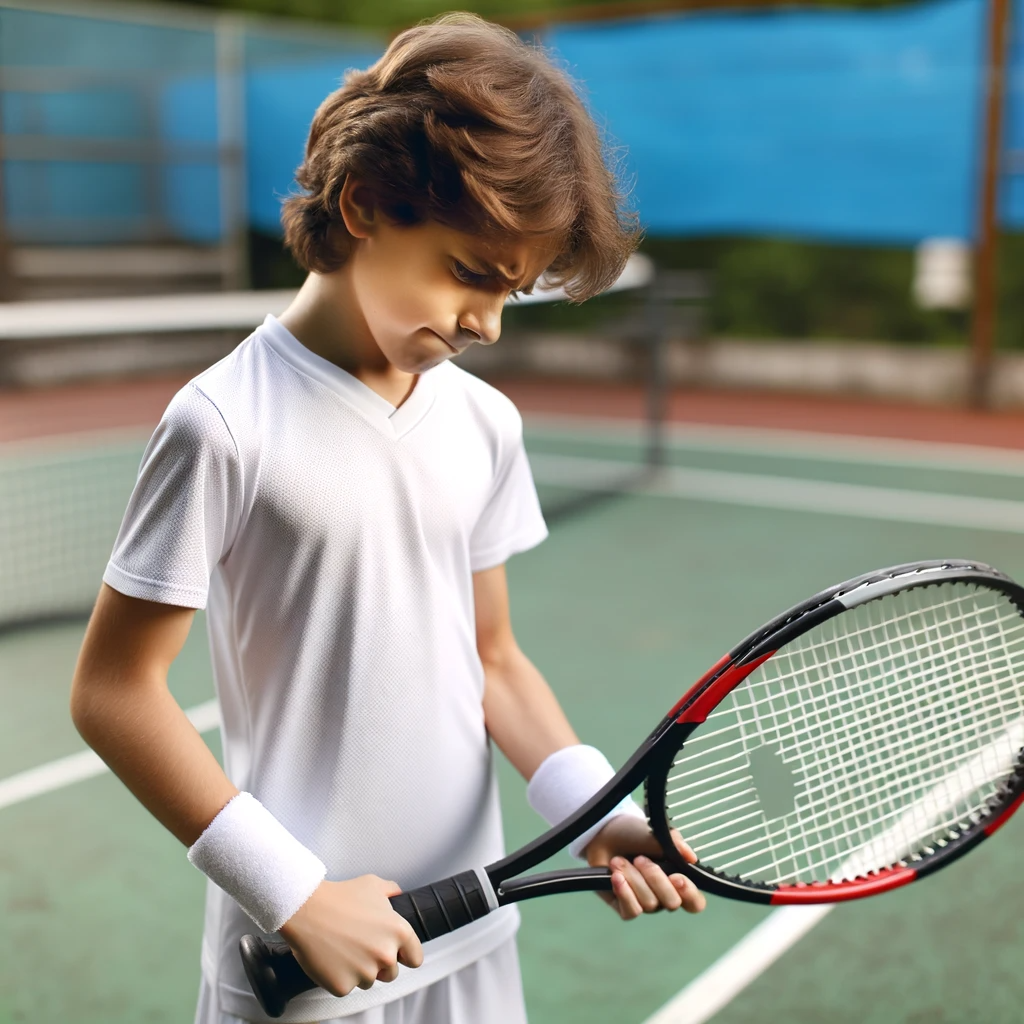Selecting the right tennis racket for your junior player is a crucial decision that can significantly impact their development and enjoyment of the game. This comprehensive guide is designed to assist you in navigating the complexities of choosing a racket that not only fits your child’s current skill level and physical attributes but also supports their growth and progression in the sport.
The Importance of the Correct Racket Size
A properly sized racket is vital for several reasons:
- Skill Development: A racket that matches the player’s size and strength allows for proper technique development.
- Injury Prevention: Using a racket that is too heavy or too large can lead to strain and injury.
- Enjoyment of the Game: A comfortable racket enhances the overall experience and helps maintain enthusiasm for the sport.
Key Considerations in Racket Selection
When selecting a tennis racket for a junior player, several factors should be considered:
1. Player’s Age and Physical Stature
Age-Based Guidelines:
- Ages 4-5:Rackets measuring 19 inches are usually recommended for this age group.
- Ages 6-8:A 21-inch racket is generally suitable.
- Ages 9-10:Consider a 23-inch racket for children in this age range.
- Ages 11+:Most children over 11 years old will be ready for a 25-inch racket, while taller players may require a 26-inch racket.
Height Considerations:
In addition to age, height plays a significant role in selecting the right racket size. Here’s a quick reference:
- Under 40 inches tall:A 19-inch racket.
- 40-44 inches tall:A 21-inch racket.
- 45-49 inches tall:A 23-inch racket.
- 50-55 inches tall:A 25-inch racket.
- Over 55 inches tall:A 26-inch racket.

Racket Recommendations by Babolat
The infographic provides a clear progression from beginner to competitor levels, catering to the evolving needs of junior players. Each stage is thoughtfully designed to match the physical growth and skill advancement of the player.
Initiation: Taking the First Swing
For the youngest players, just starting their tennis journey, the focus is on rackets that are easy to handle and encourage learning basic strokes.
- 95 cm to 110 cm (37.5 in to 43 in): Rackets ranging from 17 inches to 19 inches are recommended. These smaller rackets are perfect for kids under 6 years, offering the right balance between control and ease of use.
Discovery: Exploring the Game
As kids grow taller and their motor skills develop, they need rackets that can keep up with their improved strength and coordination.
- 115 cm to 125 cm (45 in to 49 in): A 21-inch to 23-inch racket is the sweet spot, providing a larger hitting surface while still being light enough for comfort and maneuverability.
Improvement: Refining Skills
With a few years of experience under their belt, junior players require rackets that allow for technical improvement and more powerful strokes.
- 130 cm to 145 cm (51 in to 57 in): A 23-inch to 25-inch racket will serve well during this growth phase. These rackets offer a blend of control and the added leverage for more powerful swings.
Competition: Competing with Confidence
For the advanced juniors who are competing and have a strong foundation in their strokes, a longer racket close to adult size is needed.
- 150 cm to 160 cm (59 in to 63 in): At this stage, a 26-inch racket is ideal. It provides the reach and power needed for competitive play while still being proportionate to the player’s height.
2. Grip Size
Grip size is essential for comfort and control. To find the right size:
- Measure the Grip: Have the junior player hold the racket. The space between the fingers and the palm should snugly fit the index finger of the other hand.
- Consider Hand Growth: Slightly larger grips can accommodate growing hands but avoid overly large grips that can cause strain.
3. Head Size
The head size impacts power and control:
- Beginners (95-110 square inches): Larger heads offer more power and a forgiving sweet spot, ideal for novices.
- Intermediate to Advanced (85-95 square inches): Smaller heads provide better control for skilled players.
4. Weight of the Racket
The racket’s weight is crucial for maneuverability and power:
- Lighter Rackets: Easier for beginners to handle and swing.
- Heavier Rackets: Provide more power but may be challenging for younger players to use effectively.
5. Balance Point
Rackets can be head-heavy, balanced, or head-light:
- Head-Heavy: More power in the swing, suitable for players needing extra help in generating power.
- Head-Light: Better control and easier to swing, preferred by more advanced juniors.
6. String Pattern
The string pattern affects play style:
- Open Pattern: Provides more power and spin, but less control. Suitable for aggressive players.
- Dense Pattern: Offers better control and durability, ideal for players with a precise game.
Conclusion
Selecting the right racket for your junior tennis player is a nuanced process that balances technical specifications with personal comfort and playing style. Regular assessments of your child’s growth, both physically and in skill level, will help ensure that their racket continues to be a suitable and effective tool in their tennis journey. Remember, the perfect racket today might need an upgrade tomorrow, so stay attentive to your child’s evolving needs. With the right equipment, your junior player is well on their way to a rewarding and successful experience in tennis.



